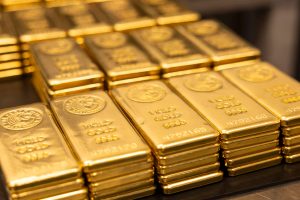Red October rumbled on in world markets on Friday as the sight of U.S. government bond yields hitting 5% for the first time since 2007 amid an increasingly threatening conflict in the Middle East left investors searching for safety.
The traditional driver of world borrowing costs – the 10-year U.S. Treasury yield – had retreated to 4.98% ahead of U.S. trading but with oil bounding back above $93 a barrel and Israel hinting at a full-scale invasion of Gaza, the mood was fraught.
Europe’s share markets (.STOXX) dropped 1%. Asia stocks had fallen to an 11-month low overnight and futures markets pointed to another slip on Wall Street, which has lost 2% over the last two days.
The Bank of Japan had intervened in its bond markets too as the 10-year Japanese government bond yield touched a decade high, while the scramble for safety pushed gold to a 3-month top and kept both the dollar (.DXY) and Swiss franc well supported. /FRX
“The fact that there was little pullback in bond yields in the past 48 hours despite the S&P 500 slipping over 2% and the VIX Index closing at over 21 for the first time since March is very disconcerting in my view,” RBC Capital strategist Alvin Tan said, referring to one of main global market fear gauges.
A slump in Tesla (TSLA.O) shares, after Elon Musk warned of demand worries, and China curbing graphite exports weren’t helping the mood either in Europe, where shares were facing a 3% loss for the week and borrowing costs were heading for their steepest weekly rise since July.
The European Central Bank meets next week and is expected to keep its rates on hold after 10 consecutive increases but for now traders were just trying to make it to the end of the week.
Federal Reserve chief Jerome Powell had said on Thursday that he agreed “in principle” that the recent jump in bond yields might “at the margin” lessen the need for more rate hikes, but also stressed the strength of the U.S. economy.
Bank of America analysts pointed out that U.S. nominal GDP has risen by a “remarkable” 40% in the past three years, reaccelerating again in Q3 to a 7-8% annualised growth rate.
“This market believes Fed “behind-the-curve” and avengers needed to curb DC’s non-stop enthusiasm for spending,” the analysts said, adding that the market selloff had left their in-house “Bull & Bear” gauge of market sentiment into “extreme bearish” territory, which they said was a “contrarian buy signal”.
Next week is likely to be a major test though with Microsoft (MSFT.O) and Alphabet (GOOGL.O) reporting their third quarter results on Tuesday, followed by Facebook owner Meta (META.O) on Wednesday, and Amazon (AMZN.O) on Thursday. Those stocks along with Apple (AAPL.O), Nvidia (NVDA.O) and Tesla combined have accounted for the bulk of the S&P 500’s 11% year-to-date gain, so any results disappointment could have broad fallout.

SUBMERGING MARKETS
The Middle East troubles and rising global borrowing costs meant emerging market stocks were at an 11-month low as was MSCI’s main Asia-Pacific index.
Tokyo’s Nikkei (.N225) finished 0.5% lower on the day and down 3.2% for the week, which was only just short of being its worst of the year so far.
Data out of Japan showed that core inflation in September slowed below the 3% threshold for the first time in over a year.
China’s blue chips (.CSI300) and Hong Kong’s Hang Seng (.HSI) both dropped 0.7%. too. China on Friday held its benchmark lending rates steady following some signs of stabilisation in the economy this week.
In the currency markets, the yen briefly revisited 150 to the dollar again although the greenback was flat against other major world currencies after a largely quiet week by its standards. /FRX
Quincy Krosby, chief global strategist at LPL Financial, said the focus was now intensifying on the scale of the U.S. fiscal deficit because of Washington’s larger defence funding needs.
U.S. President Joe Biden asked Americans on Thursday to spend billions more dollars to help Israel fight Hamas, amid mounting expectations that Israeli forces will imminently mount a ground invasion of Gaza.
A U.S. Navy warship intercepted three cruise missiles and several drones launched by the Iran-aligned Houthi movement from Yemen potentially toward Israel. A U.S. base in Iraq also came under attack, Washington said.
“There are several reasons why investors would want to sell this market, while very few to buy. That’s what we’ve seen today as risk sells off,” said Kyle Rodda, senior financial market analyst at capital.com.
“To put it in simplest terms, market participants don’t want to be carrying risk into the weekend when hostilities could erupt.”
Gold prices scaled a fresh 3-month peak of $1,990 per ounce, the highest since late July, as investors sought safe-haven assets in the turmoil.
Oil prices were headed for the second weekly gain, due to fears of an escalating regional conflict in the Middle East, which would disrupt supplies.
U.S. crude jumped 1% to $90.30 per barrel and Brent was at $93.50, up 1.2% on the day.
Información extraída de: https://www.reuters.com/markets/global-markets-wrapup-1-pix-2023-10-20/







